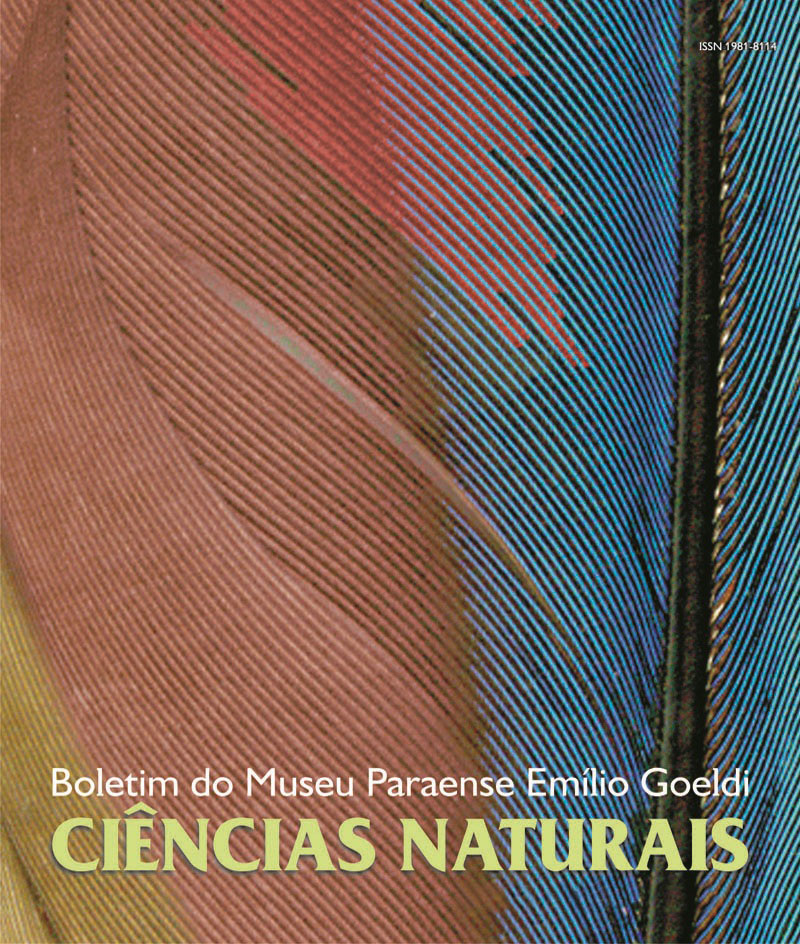Macrobenthos from unvegetated intertidal areas in the Caeté river estuary in Bragança, Pará
DOI:
https://doi.org/10.46357/bcnaturais.v1i3.733Keywords:
Amazon, Zoobenthos, Soft bottom community, MangroveAbstract
The macrobenthic community structure was studied in inter-tidal, non-vegetated areas of the Caeté river estuary, Pará, Brazil, during the dry season of 2003. Four samples were collected at four stations on the downstream direction (P1 to P4) using a corer (0.008 m2 and 20 cm long). Samples were sieved through a 0,3 mm mesh and the organisms preserved in a 5% formaline saline solution stained with Bengal rose. At each station, sediment samples were collected and salinity and water temperature recorded. A total of 105,500 individuals were collected, divided in 17 taxa comprising the fphyla: Nemertea, Arthropoda and Annelida. Polychaeta dominated the assemblages (11 taxa and 87.25% of the individuals). The most abundant taxa were Mediomastus californienses, Nephtys fluviatilis and Oligochaeta (Tubificidae). Density and richness values varied from 2625 ind.m-2 and 3 taxa at station P1 to 96625 ind.m-2 among 16 taxa at station P4. Cluster analysis seperated three groups (50% similarity): Group 1, including samples from stations P3 and P4, was characterized by a relatively high salinity (22.6 to 26.5) and a fine sand substrate. This group, dominated by Sigambra grubii, was the richest (13 taxa), most diverse (χH´= 1.18) and abundant (χ= 12220 ind.m-2); Group 2, including samples from station P1, was characterized by a salinity of 5,1 and a silt-sandy substrate. This group presented the lowest richness (3 taxa), diversity (χH´= 0.67) and abundance (χ= 665 ind.m-2) values, and was dominated by the species Namalicastys abiuma; and Group 3, including samples from station P2, was characterized by a salinity of 3.6 and a silt-sandy substrate. N. abiuma was the most abundant species of this group that was characterized by intermediate richness (5 taxa), abundance (χ= 2010 ind.m-2) and diversity (χH´= 0.71) values. Thus, it is concluded that in the intertidal area of the non-vegetated Caeté river the species number is low; Annelida is the most abundant group; the species composition reflects.
Downloads
Published
Issue
Section
License
Publication means fully assigning and transferring all copyrights of the manuscript to the journal. The Liability Statement and
Assignment of Copyrights will be enclosed with the notice of acceptance. All the authors must sign the document and return it to the journal.








